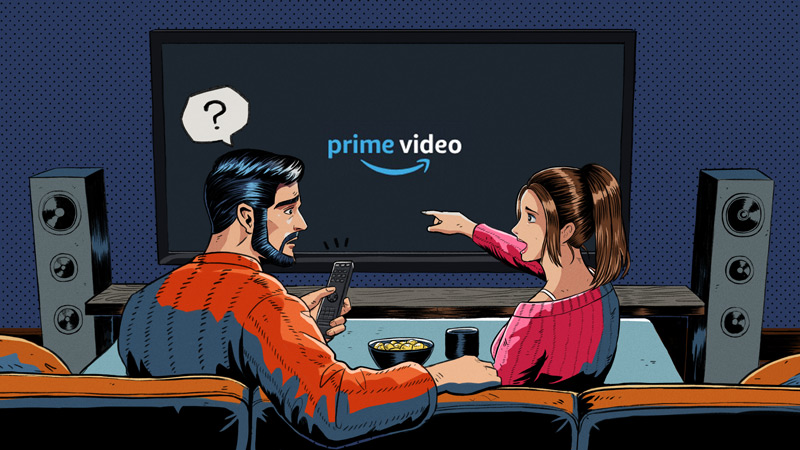
Are you stuck with Prime Video giving your a green screen?
You’re not alone! Every day, thousands of the platform’s users experience the same issue, and given how many factors can contribute to it, I’m honestly not surprised.
I know how annoying this can be, especially when you’re coming home from a long day at work and all you want to do is relax.
But don’t worry, you’ve come to the right place for answers.
Below, you’ll find a list of simple fixes you can try to get rid of the green screen for good. I’m sure one of them will hit the nail on the head.
The 7 fixes you can try to get rid of a green screen on Prime Video are:
Keep reading to learn how to enjoy your favorite content again!
HDR, or “High Dynamic Range” is a technology that was first popularized on TV sometime in 2014.
When this is enabled, the colors on your screen become much more vivid. The brights become brighter and the darks become darker, increasing the contrast between them.
Most of the time, HDR is a great tool to make your favorite scenes look much more cinematic and exciting.
But just like any other technology out there, sometimes it can fail and create some problems.
If you’ve ever noticed that your TV gets too bright or some of the colors on it are off, there’s a really good chance that HDR is failing and you’ll need to deactivate it as soon as possible.
Solution: The best way to tell whether your TV/monitor has HDR is by reading your user manual or Google searching your make and model.
If your device does have this technology, the next thing we want to do is disable it. Since there are so many models and manufacturers out there, your best bet is to Google search for “How to disable HDR on <Your TV’s Make And Model Go Here>”.
To give you a general idea, here’s how to do it on Samsung TVs:
Once you have successfully disabled HDR, Prime Video should no longer be giving you a green screen.
Sometimes the simplest answer is the right one.
You may not know this, but every piece of content within Prime Video has its own ID and space on its servers. This is why sometimes you might have trouble streaming a particular title, but be able to seamlessly enjoy another.
By keeping its content organized this way, the platform can prevent an isolated incident from becoming a general failure.
And while normally this countermeasure works wonders, it could also trick you into thinking that the problem is much bigger.
Solution: Try switching back and forth between different titles within Prime Video, and if you have a subscription on a different streaming platform, try watching something there as well.
If you keep getting a green screen on other streaming platforms, there’s a good chance that your cables or TV are to blame, and not Prime Video.
Assuming that your experience with other services is fine, go back to Prime Video and try watching something else. If you keep getting the annoying green screen, the platform’s servers are likely failing.
Next, I want us to check your connection.
Granted, Internet service drops have decreased dramatically over the last few years, but they still happen now and then.
The tricky part about diagnosing a bad connection is that sometimes, even when you have one, you won’t be completely cut off from the Internet. In some cases, you might still be able to do some light browsing or chatting while also having Prime Video give you a green screen.
How so? Because of the platform’s requirements.
You see, texting your friends and family about your day will never be as demanding on your network as streaming your favorite content online.
As a general rule, Prime Video needs a minimum Internet speed of 5 Mbps to stream in Full HD resolution (1080p), and a whopping 25 Mbps for 4K (2160p).
Solution: For larger families, I normally recommend having an Internet plan that’s 5-6 times faster than your favorite platform’s minimum requirements. For example, if you want to stream Prime Video in 4K, you’ll need a connection within the range of 125-150 Mbps.
If you live alone you might be able to get away with something slower.
Assuming that your current plan is already fast enough, try giving your provider a call and asking if they’re having coverage issues in your area. If they tell you everything’s fine on their side of the fence, you could try resetting your modem and see if that works.
If you’ve never done it before, that’s ok! It’s really simple:
Moving on, let’s check the platform’s servers.
As you may know, these are responsible for storing important information and providing millions of Prime Video subscribers with the service they expect for the price they pay.
Given how crucial they are to its everyday operations, the company has put a lot of elbow grease into making them as resistant as possible. And while I’m not saying that you should expect server failure every 5 minutes, I’d be lying if I told you that they’ve managed to make them failproof.
In fact, things that seem unimportant, such as a bad hard drive, a coding bug, or even minor hacking can greatly impact the platform’s performance and affect its features.
The telltale signs of these events are subscription verification issues, login difficulties, slow loading times, out-of-sync audio/video/subtitles, and… you guessed; an annoying green screen.
Solution: To either confirm or rule this out as the cause behind this problem, we need to check the real-time status of the platform’s servers.
Luckily, doing this is really quick and easy. Here’s what you have to do:
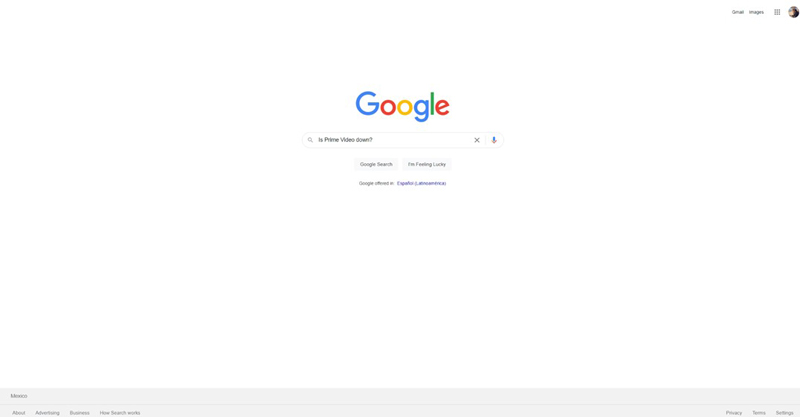
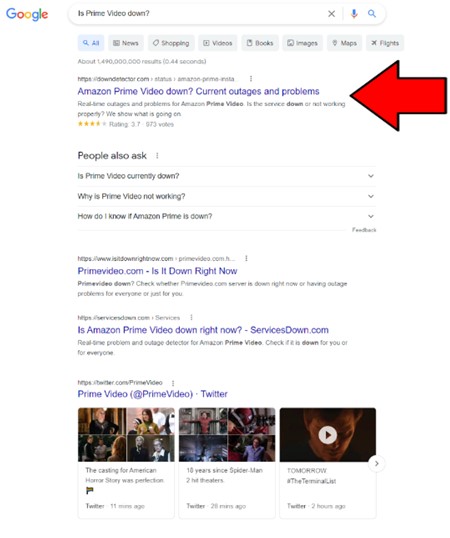
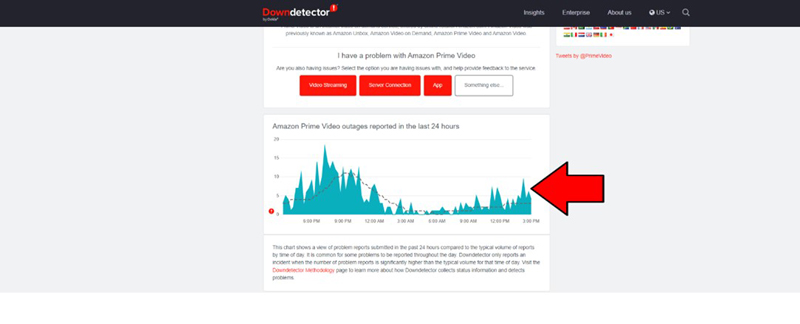
The taller the spikes, the more likely you are to be experiencing issues
If you see the equivalent of Mt. Everest forming in the graph above, it’s an almost absolute certainty that the platform’s currently having trouble.
That being said, I wouldn’t lose any sleep over it. The IT department over at Prime Video is highly capable, and to my knowledge, there’s never been an instance where the service wasn’t fully restored within a day.
If you have no idea what these are, that’s perfectly fine. Most people don’t.
But now that you’re here, I’d love to take this opportunity to shed some light on the concepts, starting with the cache.
This is where your favorite apps store important information. In it, you’re likely to find audio, video, preset configurations, user preferences, and sometimes even login credentials.
By keeping this data handy, Prime Video can load much quicker on startup and provide you with an enjoyable experience. Cookies, on the other hand, are tools used to make your browsing more efficient and increase the accuracy of targeted ads.
They’re the reason why you’re immediately bombarded on social media with ads for convection ovens right after looking up the recipe for the perfect apple pie.
Most of the time, leaving them both untouched will do more good than harm. However, in certain cases, they could also be the reason why Prime Video is giving you a green screen.
In that scenario, you’ll have to clear them.
Solution: You should be able to delete your cookies and clear your cache in every major browser and operating system out there. For this example, I’ll use Google Chrome and an Android OS.
On Google Chrome:
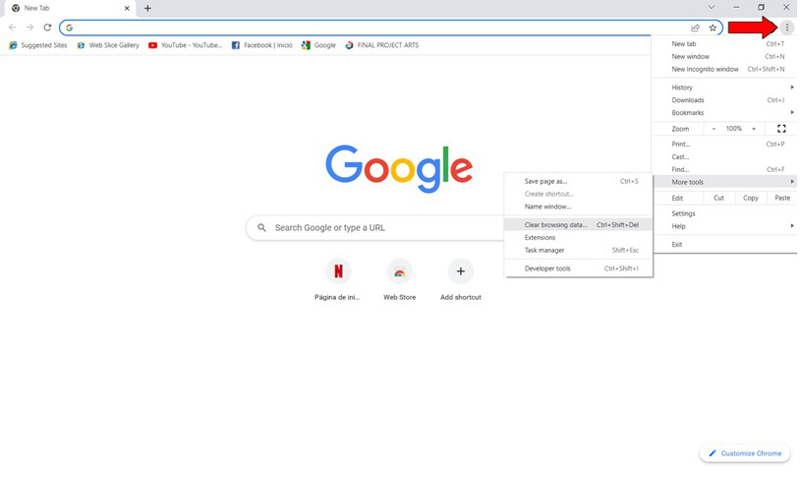
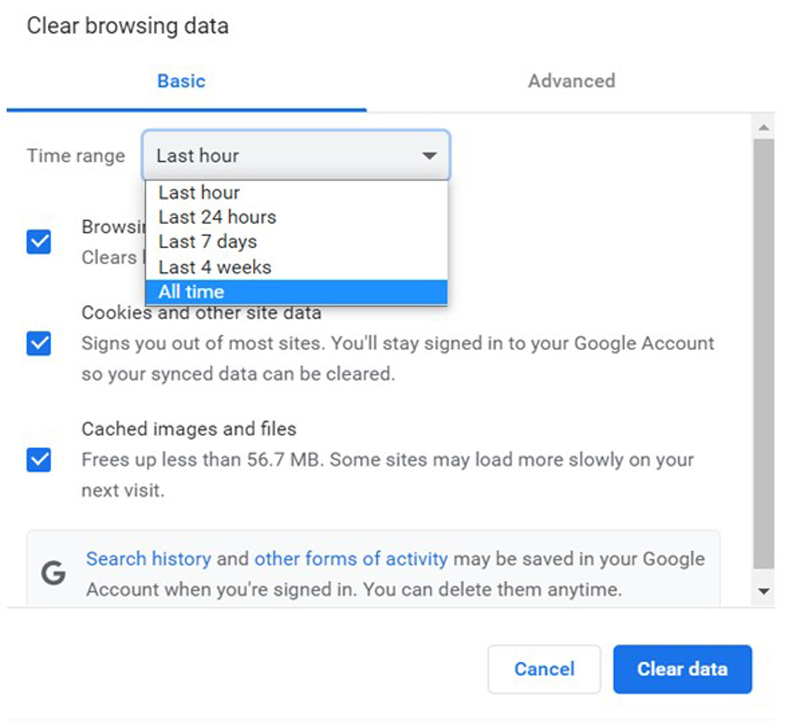
On Android devices:
I think we can both agree on the fact that VPNs are simply amazing. I mean, not only do they provide us with secure browsing, but also open up a world of possibilities for us.
What’s there not to love?
… what a shame that streaming companies don’t share the thought.
In fact, several of them, like Disney Plus, Prime Video, HBO Max, Netflix, Hulu, and many more, have been outspoken about their dislike for these, even getting to the point of blocking subscribers who use them.
I don’t applaud these actions, but I can understand them.
You see, some of the content available on these platforms is only licensed to be streamed in certain countries and regions. Since VPNs allow people from outside these areas of the world to access said content, streaming companies have to either take action or face dire legal consequences.
If you absolutely must use a VPN while watching Prime Video, I’d recommend paying for a premium subscription from a company that offers obfuscated servers.
These will make it much harder for Prime Video to detect your VPN traffic, thus reducing your chances of being blocked or targeted with bad performance.
Solution: The best way to tell whether your current VPN provider is to blame for this situation is by disabling it and streaming without it for a couple of days.
If Prime Video is no longer giving you a green screen, there’s your answer.
Keeping your favorite apps slightly outdated may not sound like a big deal. And while it won’t bring the end of days upon us, it can certainly be the source of several technical difficulties as time passes.
With every new release, app developers try to keep as much backward compatibility as they can, but it’s not always possible. Using an older version of the platform’s software on a fully updated streaming system could explain why Prime Video is giving you a green screen.
Normally automatic updating should make this no concern of yours.
However, sometimes network interruptions, background process crashes, or even strict device privacy settings can get in the way and leave the pending downloads stuck in Limbo.
If that happens, you’ll have to manually install the latest software version of the platform on your devices.
Solution: There are hundreds of different streaming devices out there, so if I were to guide you through the process of updating Prime Video within each one, we’d be here all day.
And while I don’t mind it, I’m sure you’ve got a busy schedule!
Instead, I’d advise going to Google and searching for “How to update apps on <Your Device’s Make And Model Go Here>”. You should be able to find several resources with detailed instructions for your specific case.
That being said, since I don’t want you to leave this section empty-handed, here’s how you can do it on iOS and Android devices, as well as on Roku.
For iOS devices:
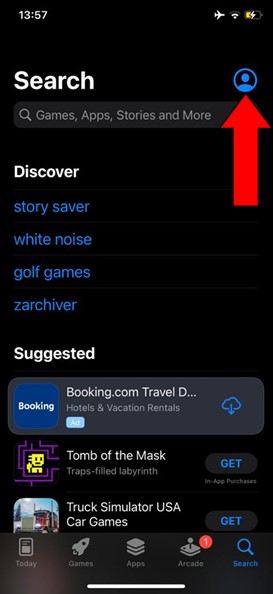
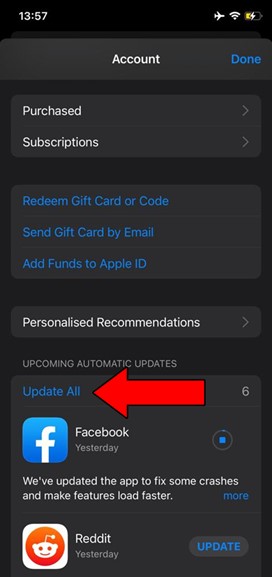
For Android devices:
You may be prompted with a notification asking for your permission to proceed with the updates. If so, simply accept and be patient.
Last, but definitely not least, let’s talk about updating your streaming system.
This is just as important as keeping your Prime Video app with its latest version installed, as newer software releases are designed with newer streaming device versions in mind.
Not unlike with the app, this should normally be done automatically. But if it isn’t, you’ll have to interfere once again.
Solution: As I said before, we’d need a book to cover how to update all streaming devices on the market. To make the most out of your time, please go to Google and search for “<How to update my <Your Device’s Make And Model Go Here>”.
To paint you a picture, here’s how to update an Amazon Firestick:
Having Prime Video keep giving your a green screen can be really annoying. Streaming should be a stress-free and uncomplicated experience, but situations like these can make things feel quite the opposite.
Luckily, as I hope you’ve learned in this piece, addressing most of the causes behind this issue is fairly simple and quick. More often than not, simple actions, like disabling HDR, and double-checking that the platform’s servers are not failing, should do the trick.
Thank you so much for sticking with me all the way to the end. If you found this article helpful, you’ll be glad to know that we upload new content every week. Please be sure to check out all our other incredible resources below to become a Tech Detective yourself!
I wish you all the best.